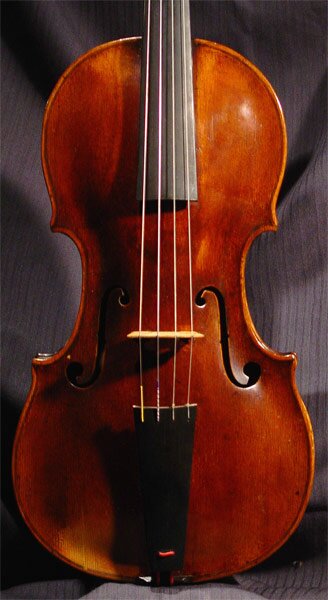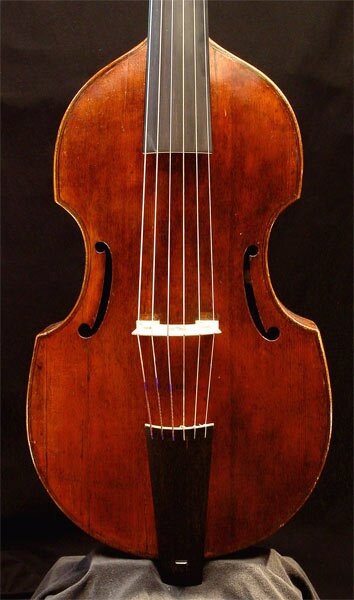Concertos for Viola da Gamba and Orchestra


Violas da gamba by Jakob Stainer (1671) and Joahim Tielke (1683)
Programme
For viola da gamba, two horns and strings
Largo – Allegro – Grave – Allegro assai
Giuseppe Tartini’s legacy consists principally of compositions for his instrument, the violin. Although having acquired early on an international reputation as a virtuoso, his musical activities nevertheless brought forth substantial contributions in the fields of composition, theory and pedagogy. As a composer he cultivated the field of the solo concerto and the sonata with and without continuo. His very personal style, unmistakably betraying his indebtedness to Vivaldi’s language, represents a synthesis between the “gallant” style fashionable in his homeland with the newly emerging “Empfindsamkeit ” of its northern neighbors. In it one encounters a balanced mixture of the lyric (as imitation of the human voice – always a primary attribute of the Italian violin), of the pathetic (neohumanistic involvement with rhetoric) and of bold, instrumental virtuosity. The “Concerto per la viola (da gamba)” – preserved in a Parisian and a Viennese manuscript – show these characteristics of his style in exemplary form. The first movement – Largo – unfolds in exalted cantilene, accompanied by clear and noble harmonies; the two softly pulsating horns bestow this movement a breath of classic splendour and elegance. The second movement – Allegro, rigorously designed after Vivaldi’s manner, betrays Tartini’s propensity for virtuoso ornamentation: Who knows, whether that same pyrotechnically gifted Satan paid Tartini a second visit during the composition of this work? An elegiac and pathetic mood permeates the third movement – Grave in d-minor, richly but sensitively embellished by the composer himself. The brilliant and exuberant final Allegro assai reminds one of a jocular, whimsical scherzo. The fanfares of the paired horns accentuate the veritable joy of life inherent in this movement. The delightful cadenzas sprouted from Tartini’s imaginative hand; the one to the last movement, with its harmonically outrageous turns, seems indeed even somewhat bizarre to our ears.
The Tartini concerto will be played on a viola da gamba by Jakob Stainer, Absam, 1671. This instrument has a very rich and powerful sound which makes it suitable for Tartini’s musical language.
For viola da gamba and strings
Ouverture – La Trompette – Sarabande – Rondeau – Bourée – Courante – Gigue
The musically cosmopolitan Telemann demonstrates through forms and movement titles – after the French Fashion – his clear intentions of setting this delightful, brilliantly concertante Suite in that very same French style, even in Germany so cultivated and cherished. Unlike Johann Sebastian Bach, who in his so-called French “Ouvertures” (Orchestral Suites) continued to indulge in his italian-inspired native style – albeit clothed in a foreign cloak, Telemann was eminently acquainted with the scene in Paris and its particular taste. His meticulously planned journey to the City on the Seine – prompted by an invitation of the celebrated virtuosi of the “Concerts spirituelles” – the flutist, Blavet, the violinist, Guignon, the violist da gamba, Forqueray and the cellist, Cupis – which finally took place in 1737, unrolled almost as a “triumphal parade” of this ubiquitously acclaimed musical genius. The brilliantly set viola da gamba part of this suite plays an important role in a fundamentally orchestral setting, very much like the flute part of the B-minor Suite by J.S. Bach. Extensive and opulent figurations in the Allegro of the Ouverture, as well as whole parts of the subsequent dance movements are entrusted to this instrument. The very effective dialog-exchanges between the viola da gamba and the orchestra in the Gavotte and the Gigue lead to a fulminating and exciting climax to the suite. JV
The Telemann suite will be performed on a viola da gamba by Joachim Tielke, Hamburg, 1683. This instrument has a very clear and brilliant sound, which carries well even over a modern orchestra.
Giuseppe Tartini – Concerto in A-major for viola da gamba & stringsG. Ph. Telemann – Concerto in A-major for viola da gamba & stringsG. Ph. Telemann – Concerto in a-minor for flauto dolce, viola da gamba & stringsG. Ph. Telemann – Sinfonia F-Major for flauto dolce, viola da gamba & strings (winds ad lib.)
Johann Pfeiffer – Concerto in A-Major for viola da gamba & strings
Johann Gottlieb Graun – 8 Concertos for viola da gamba & strings
Antonio Vivaldi – Concerto for violin, viola da gamba & strings